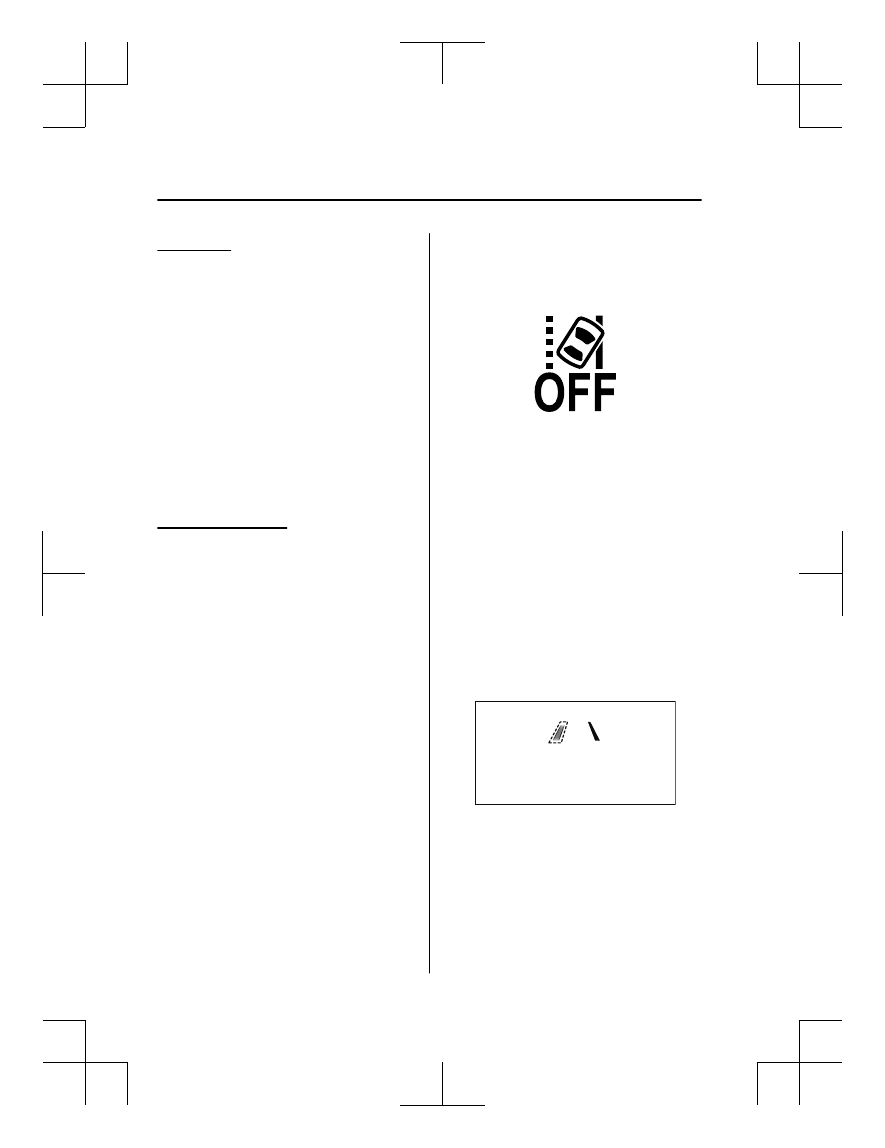Mazda CX-3 (2019 year). Manual - part 14

Auto cancel
In the following cases, the LDWS cancels
automatically and the LDWS warning
light in the instrument cluster turns on.
•
The temperature inside the camera is
high or low.
•
The windshield around the camera is
foggy.
•
The windshield around the camera is
blocked by an obstruction, causing poor
forward visibility.
The LDWS is enabled automatically when
the operation conditions are met, and the
LDWS warning light turns off.
Auto cancel warning
When the following operations are
performed, the LDWS determines that the
driver intends to make a lane change and
the LDWS warning is canceled
automatically. The LDWS is enabled
automatically after the driver performs the
operation.
•
The steering wheel is operated abruptly.
•
The brake pedal is depressed abruptly.
•
The accelerator pedal is depressed
abruptly.
•
The turn signal lever is operated (after
the turn signal lever is returned, the
LDWS may not operate for about 3
seconds which is the period of time
required to make a lane correction).
NOTE
After about 30 seconds have elapsed with
the turn signal lever left operating, the
LDWS warning may operate if the vehicle
is close to a white or yellow line.
▼ Canceling the System
Press the LDWS OFF switch to cancel the
LDWS. The LDWS OFF indicator light
turns on.
▼ Lane Departure Warning System
(LDWS) Warning
If the system determines that there is the
possibility of a lane departure, the LDWS
warning beep activates and the LDWS
warning light flashes. Operate the steering
wheel appropriately and steer the vehicle
to the center of the lane.
For vehicles equipped with the active
driving display, if there is the possibility of
a lane departure, the system indicates the
direction it determines that the vehicle is
deviating in the active driving display.
Indication on display
NOTE
•
If the LDWS warning sound is set to
rumble
*1
, the sound will be heard from
the vehicle speaker on the side which the
system determined the vehicle may be
deviating from its lane.
When Driving
i-ACTIVSENSE
4-88
CX-3_8GR7-EA-18B_Edition1
2017-12-20 16:18:14